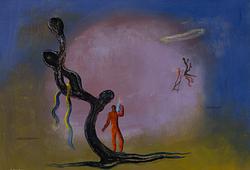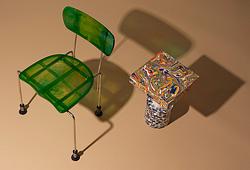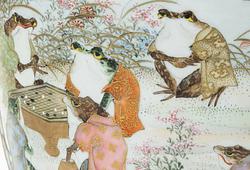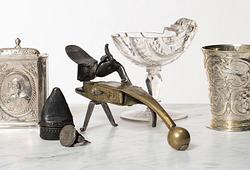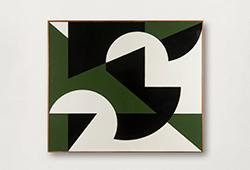Carl Milles
"Kämpande centaurer" (Fighting Centaurs)
Signed Carl Milles. Foundry mark L. Rasmussen, København. The motif conceived 1919. Bronze, green patina. Height 58 cm, length 49 cm, width 25 cm. Marble pedestal, height 132 cm, length 38 cm, width 30.5 cm. Inscription on the pedestal: 20 Sept 1920.
Kirjallisuus
Erik Näslund, "Carl Milles - en biografi", 1991. The motif is listed in the list of works at p. 335.
Muut tiedot
"Fighting Centaurs"
The sculpture group "Fighting Centaurs" is very rare and only a few examples are known. The composition is hardly mentioned in the literature about Carl Milles' artwork, so very little is known about its origin. Correspondence regarding the sculpture is preserved in the Millesgården archives, where it is referred to as "Fighting Centaurs". One copy is photographed, likely in the 1920s, where it is placed outside Milles' home in Lidingö. Another copy is known to have been cast in 1919 on behalf of Stora Kopparberg Bergslags AB and donated as a gift to Consul General Olof Söderberg and his wife Otilia.
Milles has used the motif of centaurs in other sculptures, including the reliefs on the well basin for the Industrial Monument outside KTH in Stockholm. Milles possibly drew inspiration for the battling centaurs from the reliefs on the Temple of Zeus in Olympia, where the Lapiths fight with the centaurs after they abducted a group of women. In Greek mythology, centaurs are a kind of half-human, half-horse creature that lived in the mountains of Peloponnese. Centaurs are described as wild and unreliable, but also friendly and sometimes even wise.




